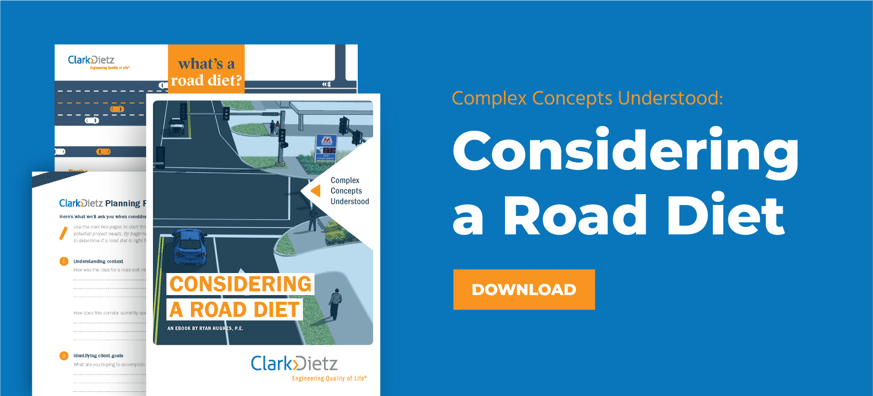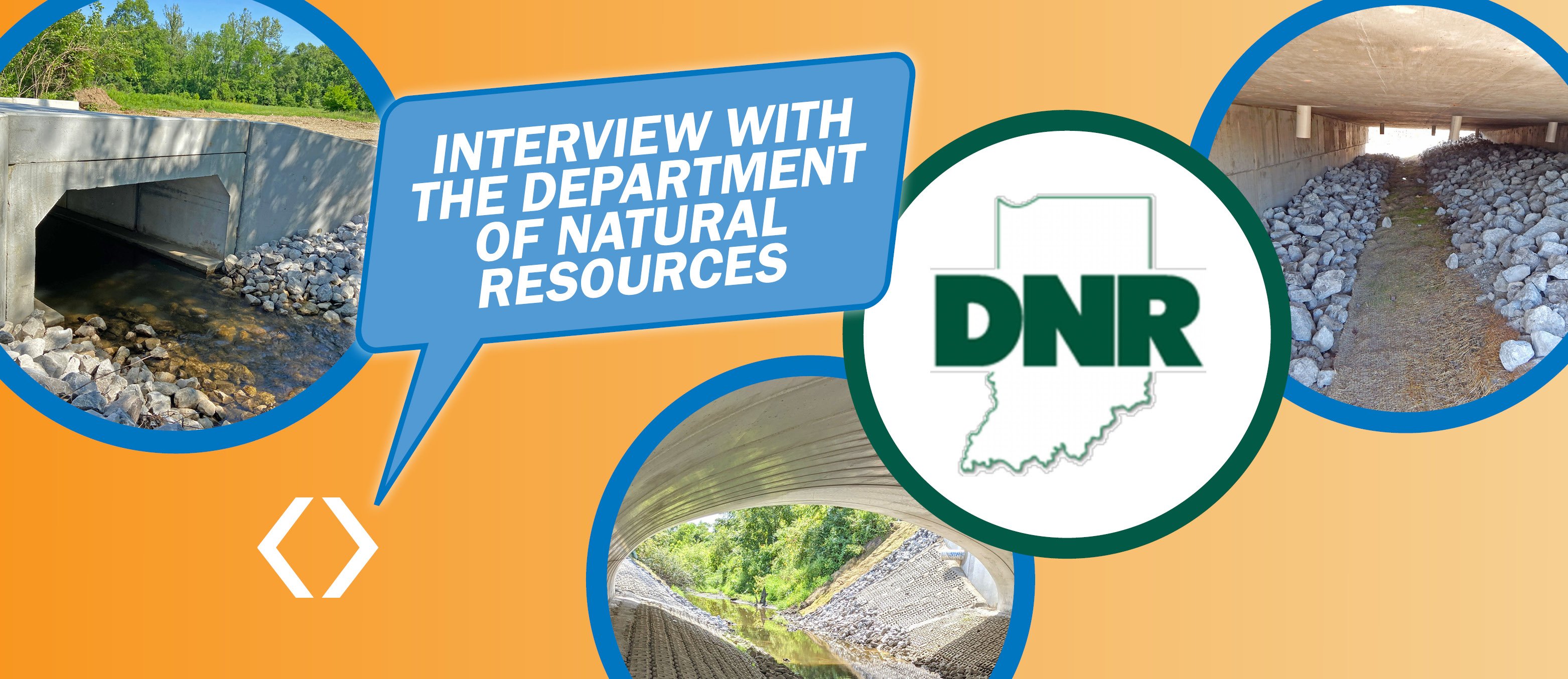The practice of reducing the number of lanes along a street as a tool to increase safety began gaining popularity in the 1990’s, according to the Federal Highway Administration (FHWA), and yet the term “road diet” still elicits a strange reaction from many people. The National Complete Streets Coalition notes that road diets are also gaining more and more recognition because they are one of the many design solutions used to create “complete streets”, or streets that are designed to be safe for all users. While cities across the U.S. are enacting Complete Streets policies, Clark Dietz has been implementing projects with the values of Complete Streets for a long time. Our roots in a college town, where campus transportation demands are somewhat different than the traditional auto-centric model, have given us a foundation of designing streets with all users in mind. Our MCORE project in the Champaign-Urbana area is a good example of this.
Watch Discussing Road Diets: an interview with Ryan Hughes, PE
Road Diets are User Friendly & Easy on the Budget
Cutting a lane of traffic and adding a two-way left turn lane can often be done for lower costs than traditional street reconstruction, can increase safety for both vehicles and non-motorized users, and can spur economic growth in a neighborhood. A two-way left turn lane will “remove” left-turning vehicles from the traffic stream, potentially reducing delay and the risk of rear end collisions for vehicles traveling through. Road diets have also been shown to reduce the variability in speeds between different vehicles. Not only does this make traveling a corridor safer for vehicles, non-motorized users (e.g. pedestrians and bicyclists) gain a better expectation of the movement of vehicles resulting in a more comfortable travel environment. Road diets also provide more space in the roadway for pedestrian safety treatments such as refuge islands and curb extensions. Other reallocated space could be used for on-street bicycle lanes or parking. Finally, agencies can often implement a road diet simply by re-striping the street.
Planning for a Road Diet
Successful road diet projects require a careful understanding of the context of a corridor, the goals of a community, and the fundamentals of traffic engineering. First, existing data about the corridor needs to be collected and analyzed. This includes traffic counts, area growth rates, and right-of-way measurements. Second, it is critical that the agency and/or designer have some way of learning the public’s vision for this corridor. Sometimes this comes in the form of a long-range planning document that has identified certain corridors for road diet improvements. Often, a client approaches us and already knows they want to consider a road diet on a specific corridor. This usually means they have a vision of transforming the corridor for a variety of goals, but we can help craft this vision as well. Download our eBook for helpful worksheets with questions we normally ask clients and get started on your vision.
Regardless, public outreach is required to evaluate the needs and desires of residents, businesses, and community organizations. Next, the engineering feasibility of a road diet will consider the traffic volumes, impacts to intersection operations, potential roadway cross sections, and other metrics. Once this is complete, communicating the benefits and possible drawbacks of the road diet with the agency and the public is important. Additionally, feedback from the public at this stage can enhance the final design.
Transform Your Community
Clark Dietz understands that the transportation needs of a community include more than regular infrastructure maintenance. Transportation can and should be a tool for transforming communities. Road diets are one possible design application that contributes to this goal, often for lower costs than traditional street reconstruction. It is important for an agency or community considering a road diet to engage in goal setting and visioning for the corridor because this will be used to guide the feasibility evaluation process. FHWA has helpful tools and research related to road diets that can help with this process. Additionally, with our experience helping clients navigate this complex process and our passion for developing transportation solutions that transform communities, Clark Dietz is excited to see how a road diet transformation can be used in your community to improve the quality of life of all users.







